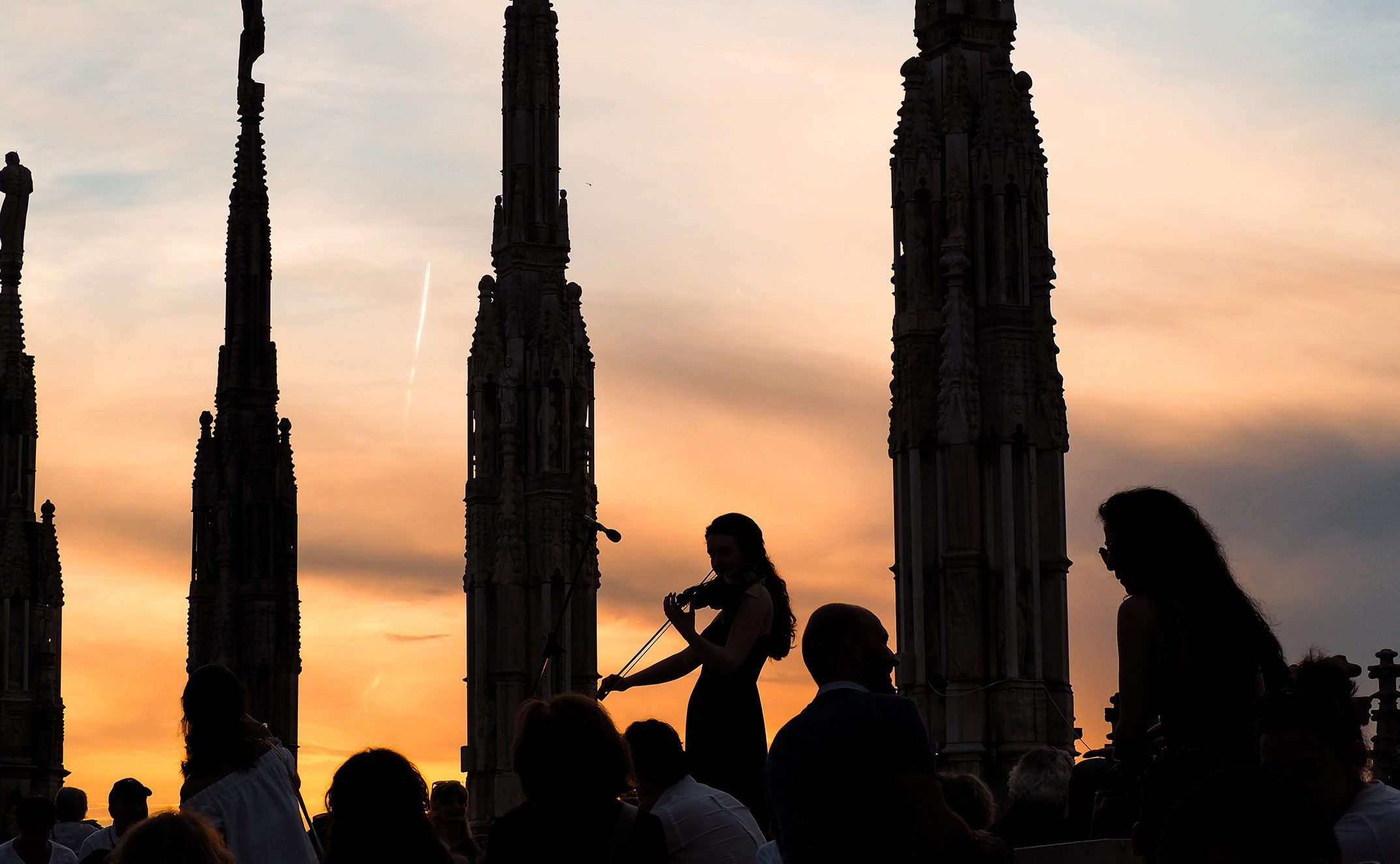On Sunday 29 September 2024, at 11 a.m., in the Duomo, at the beginning of the Chapter Mass, on the Solemnity of the Martyr Saint Thecla, Patroness of the Cathedral Parish, one of the most evocative rites of the Ambrosian liturgy will take place: the “Rito del Faro”.
At the beginning of the celebration, at the end of the initial procession and the traditional chanting of the 12 Kýrie eléison, before ascending to the altar, the celebrant, with the help of three lighted candles fixed to the top of a pole, sets fire to a globe of cotton wool, hung at the entrance to the presbytery. The meaning of the rite alludes to the sacrifice of life for Christ by the Martyr Thecla, whose name has been inscribed since ancient times in the Eucharistic Canon proper of the Milanese liturgy.
This custom certainly derives from an older tradition, probably dating back to the 7th century and, in the Milanese context, at least to the 12th century with reference to the cathedral liturgy.
In addition to the fascination of this ancient rite, at the solemn Chapter Mass at 11 a.m, the Musical Chapel will perform the Gloria and the Agnus Dei from the famous Missa Papæ Marcelli by Giovanni Pierluigi da Palestrina.
This Mass, published in Rome in 1567 in the Second Book of Masses Messe (Missarum Liber Secundus [Romae, Apud Haeredes Valerii et Aloysii Doricorum fratum Brixiensium 1567]), is shrouded in an almost “mythological” understanding. It is the first six-voice composition published by Palestrina, it is the only composition explicitly dedicated to a Pope (Marcello Cervini, who became Pope under the name of Marcellus II and remained on the papal throne for just three weeks, from 9 to 30 April 1555), it is credited with having saved polyphony by ensuring the “intelligibility of the text” required for polyphonic music by the Council of Trent, has been the subject of numerous transcriptions (e.g. the eight-voice elaboration by Francesco Soriano [1609], the reduction to four voices by Giovanni Francesco Anerio [1619] and the 12-voice elaboration probably made by Stefano Nascimbeni [perhaps early 1600]) and is today perhaps Palestrina’s best-known composition and judged to be “exemplary” of his writing style.
TThe Musical Chapel of the Milan Duomo will sing the Gloria and the Agnus Dei of this famous Mass using a new critical edition that has as its source the editio princeps of 1567, a first and fundamental point of reference in the “Edizione Nazionale delle Opere di Giovanni Pierluigi da Palestrina” edited by Francesco Luisi (Volume IV, Tomi 1-2, Istituto Poligrafico e Zecca dello Stato, Rome, 2011), and a synoptic comparison with the edition by Haberl (H
In a journey of research into the aesthetic relevance of Renaissance music, the Cappella Musicale del Duomo di Milano will also perform what is, in some way, subtended by the Renaissance writing and that, in the 16th century, was entrusted to the improvisational skills of singers.
The 1567 edition is available at this link.
Not only. Every Sunday, the Duomo of Milan offers all the worshippers and visitors from abroad a specific and innovative service, by means of special QR Codes placed in various places in the Cathedral: the possibility of downloading a liturgical subsidy in English onto their device, including the Sunday Readings and the Rite of Mass, in PDF format.
The English-language aids, which can also be accessed through the link liturgy.duomomilano.it, are also accompanied by a second document that includes all the musical parts, in order to facilitate greater accessibility and openness to those from all over the world who wish to experience the Duomo in the fullness of its faith and cultural dimension.
Inviting everyone to experience this dimension, we remind you that all festive Chapter celebrations are streamed live on the official Duomo di Milano YouTube channel Duomo Milano Tv.








